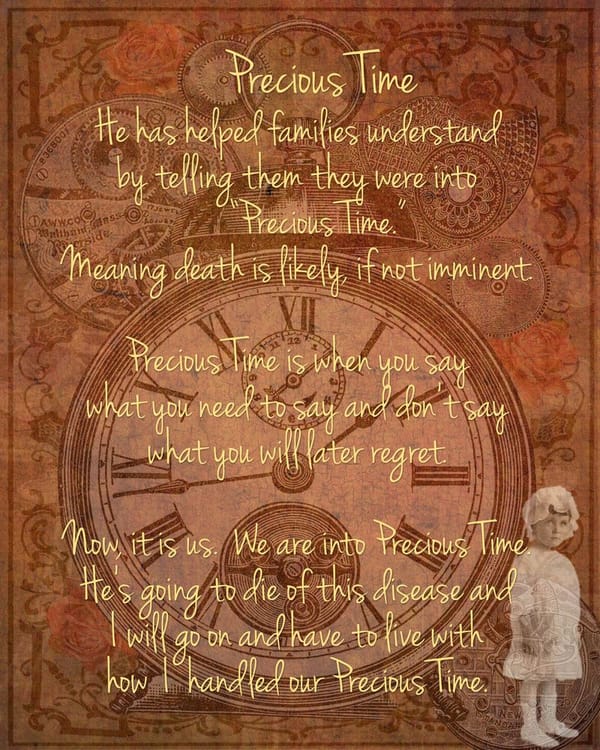Pain Management in Palliative and Hospice Care

Understanding Pain Management in Palliative and Hospice Care
Pain is one of the most distressing symptoms for patients with advanced illnesses. Managing pain in palliative and hospice care is a complex and multifaceted process that requires a careful balance of pharmacological treatments, psychological support, and holistic approaches. The primary goal is not just to relieve pain but to improve the quality of life for patients by managing their physical, emotional, and psychological suffering. Effective pain management requires a personalized approach that addresses the unique needs of each patient.
The Importance of Pain Management in Palliative Care
Palliative and hospice care focuses on improving the quality of life for patients who are facing serious, life-limiting illnesses. It aims to alleviate the symptoms, particularly pain, that may accompany conditions such as cancer, heart failure, COPD, dementia, and other chronic diseases. Pain in palliative care can be caused by the illness itself, treatments like surgery or radiation, or other underlying factors such as nerve damage or inflammation. Chronic pain in these cases can severely impact a patient’s ability to live with dignity and comfort.
Understanding the underlying causes of pain, its severity, and its impact on a patient’s life is essential for creating an effective pain management plan. Pain in palliative and hospice care is not always easily predictable, as it can vary from person to person and can change in intensity over time. Managing pain in this setting is a dynamic process, requiring continuous assessment and adjustments to the treatment plan.
Assessing Pain in Palliative and Hospice Care
Before initiating treatment, it is important to assess the pain in a comprehensive way. This includes:
- Identifying the Type of Pain: Pain can be classified as nociceptive (caused by damage to tissues), neuropathic (caused by nerve damage), or visceral (related to the internal organs). Each type of pain may require different treatment strategies.
- Measuring Pain Intensity: Scales like the numerical rating scale (NRS), visual analog scale (VAS), or the Faces Pain Scale-Revised (FPS-R) are commonly used to assess the severity of pain and help guide treatment decisions.
- Understanding the Impact on Quality of Life: It’s essential to determine how pain affects a patient's ability to perform daily activities, maintain relationships, and engage in enjoyable activities.
Once pain is adequately assessed, it’s time to create a treatment plan tailored to the individual needs of the patient. Pain management in palliative care should be dynamic, regularly reviewed, and adjusted based on patient feedback and changing needs.
Pharmacological Pain Management
Medications are the cornerstone of pain management in palliative and hospice care. Different classes of drugs are used depending on the type and severity of pain. It is important to note that opioid use remains a common and essential part of pain management in palliative and hospice care, but a multi-modal approach is often more effective.
1. Opioids
Opioids are the most effective pain relievers for severe pain and are often the primary choice for patients in palliative care, especially when managing cancer-related pain. Common opioids include:
- Morphine
- Oxycodone
- Fentanyl
- Hydromorphone
These medications work by binding to opioid receptors in the brain and spinal cord, effectively reducing pain. The dosage is titrated to provide the best balance between pain relief and manageable side effects. It is important to educate patients and their families about the potential risks, including addiction, sedation, and constipation.
2. Non-Steroidal Anti-Inflammatory Drugs (NSAIDs)
NSAIDs, such as ibuprofen, naproxen, and diclofenac, are effective for managing mild to moderate nociceptive pain, particularly in cases involving inflammation. However, they should be used cautiously in palliative care, as long-term use can lead to side effects such as gastrointestinal bleeding or kidney damage, particularly in patients who are elderly or have underlying conditions.
3. Adjuvant Medications
Adjuvants are drugs that are not primarily designed for pain management but can be used to help manage pain when combined with primary pain medications. These include:
- Antidepressants: Medications like amitriptyline and duloxetine are often used in cases of neuropathic pain, such as that caused by diabetic neuropathy or post-surgical nerve damage.
- Anticonvulsants: Drugs like gabapentin or pregabalin can help relieve neuropathic pain by stabilizing nerve activity.
- Corticosteroids: These may be used to reduce inflammation in cases where pain is due to tumor growth or swelling.
- Local Anesthetics: Medications like lidocaine patches can provide targeted relief for localized pain, particularly in cases of post-herpetic neuralgia.
4. Topical Medications
Topical treatments, such as capsaicin creams or lidocaine patches, can provide relief from localized pain, especially in cases of nerve damage or certain types of musculoskeletal pain. These medications offer fewer systemic side effects and can be an effective option when combined with other pain-relieving therapies.
Non-Pharmacological Approaches
In addition to medications, a variety of non-pharmacological approaches can enhance pain management in palliative care. These methods are often used in combination with pharmacological treatments and are tailored to the preferences and needs of the patient.
1. Physical Therapy and Occupational Therapy
Physical therapy aims to improve the patient’s range of motion and strength, which can help manage pain caused by stiffness, muscle spasms, or immobility. Occupational therapy focuses on modifying the patient’s environment to reduce pain and increase their ability to perform daily tasks independently.
2. Massage Therapy
Massage therapy can reduce pain and improve circulation, particularly for patients with musculoskeletal pain, tension, or anxiety. Gentle massage can also help reduce stress and promote relaxation, contributing to an overall sense of well-being.
3. Acupuncture
Acupuncture involves the insertion of fine needles into specific points on the body. It is thought to help relieve pain by stimulating the release of endorphins and enhancing circulation. Research suggests acupuncture may be beneficial in managing certain types of chronic pain, including cancer-related pain.
4. Mind-Body Approaches
Mind-body techniques such as meditation, visualization/guided imagery, deep breathing exercises, and progressive muscle relaxation can be useful in managing the psychological aspects of pain. These techniques help patients cope with the emotional and psychological burdens of their illness, which can exacerbate the perception of pain.
5. Cognitive Behavioral Therapy (CBT)
CBT is a psychotherapeutic approach that helps patients change the way they think about and respond to pain. It is particularly useful in managing chronic pain and can help reduce the emotional and psychological distress associated with living with a serious illness.
6. Spiritual Care
Spiritual care is an important part of holistic palliative and hospice care. For many patients, pain is not just a physical experience but a deeply emotional or spiritual one. Addressing a patient's spiritual needs, whether through prayer, meditation, or providing a listening ear, can help them find meaning and peace amidst their suffering.
The Role of the Care Team
Pain management in palliative and hospice care is a collaborative process. A team of healthcare professionals, including physicians, nurses, social workers, chaplains, physical therapists, and psychologists, work together to create a comprehensive pain management plan. Regular communication between the patient and care team is essential to ensure that the pain management approach is effective, and adjustments are made when necessary.
Conclusion
Pain management in palliative and hospice care is a delicate balance that requires careful assessment, individualized treatment plans, and a combination of pharmacological and non-pharmacological interventions. While medications like opioids remain a cornerstone of pain relief, it is essential to incorporate holistic approaches that address the mind, body, and spirit. By taking a patient-centered approach, healthcare providers can help improve the quality of life for those facing serious, life-limiting illnesses, providing comfort and dignity in their final days.
- Montgomery, F., 2002. Pain management in palliative care. Pharmaceutical journal, 268(7186), pp.254-256.
- Schug, S.A., Ting, S. Fentanyl Formulations in the Management of Pain: An Update. Drugs 77, 747–763 (2017). https://doi.org/10.1007/s40265-017-0727-z
- Updates in palliative care – overview and recent advancements in the pharmacological management of cancer pain. Clinical Medicine Volume 18, Issue 1, February 2018, Pages 17-22. https://doi.org/10.7861/clinmedicine.18-1-17.
- Pain management in home hospice patients: A retrospective descriptive study. Nursing and Health Sciences. Volume19, Issue3 September 2017 Pages 381-387. https://doi.org/10.1111/nhs.12359
- Does Receipt of Hospice Care in Nursing Homes Improve the Management of Pain at the End of Life? Journal of the American Geriatrics Society. Volume50, Issue3 March 2002 Pages 507-515. https://doi.org/10.1046/j.1532-5415.2002.50118.x
- Ethical considerations in effective pain management at the end of life. UpToDate. Literature review current through February 2025. This topic last updated July 21, 2023. Authored by Vicki A. Jackson MD MPH, Richard E. Leiter MD MA.





